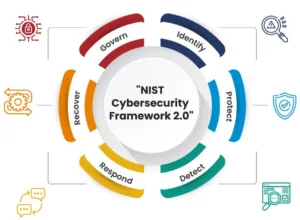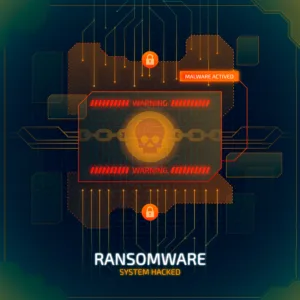
Table of Contents
In the ever-evolving landscape of cybersecurity, organizations are continually seeking innovative solutions to fortify their defenses against an array of threats. One such groundbreaking development is the integration of automation in security control assessments.
This transformative approach not only enhances efficiency but also proves to be a game-changer in the relentless battle against cyber threats.
The Imperative for Automation in Control Assessments
As cyber threats become more sophisticated and prevalent, the need for robust security controls is paramount. Traditionally, security control assessments have been predominantly manual processes, often requiring significant time and resources.
However, in today’s fast-paced digital environment, the speed and agility of threat actors necessitate a more dynamic and proactive defense strategy.
Enter automation, a technological marvel that is reshaping the way organizations approach security control assessments. By automating routine and time-consuming tasks, cybersecurity professionals can redirect their focus towards more strategic and complex aspects of threat mitigation, thereby enhancing overall security posture.
Understanding Automation in Control Assessments
1. Efficiency Redefined
The cornerstone of automated security control assessments lies in their ability to enhance efficiency. Automation eliminates the need for manual execution of routine security tasks, such as vulnerability scans, compliance checks, and configuration assessments. This not only accelerates the assessment process but also minimizes the risk of human error, a factor that can often be a weak link in traditional manual assessments.
2. Real-Time Threat Intelligence Integration
In the realm of cybersecurity, timing is everything. Automated security control assessments facilitate the integration of real-time threat intelligence, allowing organizations to respond swiftly to emerging threats. By continuously monitoring and updating security controls, automated systems ensure that organizations stay one step ahead of cyber adversaries.
3. Scalability and Consistency
Manual security assessments can be resource-intensive, especially as organizations scale. Automation provides a scalable solution that ensures consistent application of security controls across a growing infrastructure. This consistency is crucial for compliance adherence and maintaining a resilient security posture, regardless of the size or complexity of the IT environment.
4. Risk Mitigation and Compliance Assurance
Automated assessments enable organizations to identify and address vulnerabilities promptly, mitigating potential risks before they can be exploited. Moreover, automated processes contribute to ensuring compliance with industry regulations and standards. By automating compliance checks, organizations can streamline the often cumbersome task of meeting regulatory requirements.
Overcoming Challenges in the Adoption of Automation
While the benefits of automated security control assessments are compelling, the journey towards implementation is not without its challenges. Organizations must navigate issues such as integration complexities, workforce upskilling, and ensuring the compatibility of automated solutions with existing infrastructure.
Addressing these challenges requires a strategic approach that combines technology adoption with organizational readiness.
1. Integration Challenges
Integrating automated security control assessment tools with existing systems can be a complex task. It requires a meticulous understanding of the organization’s current infrastructure, potential points of integration, and the establishment of seamless communication channels between various security components. Collaboration between IT and security teams is crucial during this phase to ensure a smooth transition.
2. Workforce Upskilling and Acceptance
The introduction of automation inevitably changes the roles and responsibilities of cybersecurity professionals. There may be concerns about job displacement or the need for upskilling to effectively operate and manage automated systems. Organizations must invest in training programs and create a culture that embraces technological advancements, assuring their workforce that automation is a tool to enhance their capabilities rather than replace them.
3. Ensuring Compatibility and Adaptability Automated security control assessments must align with the organization’s unique needs and objectives. It is essential to choose solutions that are adaptable to evolving threats and can seamlessly integrate with future technologies. Regular evaluations and updates to automated systems are imperative to ensure they remain effective in the face of emerging cyber threats.
Case Studies
1. XYZ Corporation: Accelerating Compliance Adherence
XYZ Corporation, a global leader in the financial sector, implemented automated security control assessments to streamline their compliance processes. By automating routine checks and audits, they significantly reduced the time and resources required to ensure adherence to industry regulations. This not only improved their compliance posture but also freed up their cybersecurity team to focus on strategic threat intelligence analysis.
2. Tech Innovators Inc.: Proactive Threat Detection
Tech Innovators Inc., a technology-driven company, leveraged automated security control assessments to bolster their threat detection capabilities. The integration of real-time threat intelligence feeds allowed them to identify and neutralize potential threats before they could cause harm. This proactive approach not only enhanced their security but also reinforced customer trust in their commitment to data protection.
The Future Landscape of Automated Security Control Assessments
As technology continues to advance, the future of security control assessments undoubtedly lies in further automation and integration of artificial intelligence. Machine learning algorithms can enhance the ability of automated systems to detect and respond to novel threats, creating a dynamic defense mechanism that evolves in real-time.
Moreover, the concept of autonomous security operations centers (ASOCs) is gaining traction, where automated systems not only assess security controls but also autonomously respond to emerging threats. This shift towards autonomous security reflects the industry’s recognition of the need for speed and agility in combating modern cyber threats.
Conclusion
In the quest for a robust cybersecurity posture, organizations must embrace the transformative power of automation in security control assessments. The efficiency gains, real-time threat intelligence integration, scalability, and risk mitigation benefits far outweigh the challenges associated with adoption. As we navigate the evolving threat landscape, automation stands as a formidable ally in streamlining security processes and fortifying defenses against an ever-adaptive adversary.
The journey towards automated security control assessments is not just a technological evolution; it is a strategic imperative for organizations committed to staying ahead in the dynamic and high-stakes world of cybersecurity.
By understanding the role automation plays and proactively addressing challenges, organizations can usher in a new era of streamlined security that is agile, efficient, and resilient.
Read more on https://cybertechworld.co.in for insightful cybersecurity related content.




















Thanks for sharing. I read many of your blog posts, cool, your blog is very good.
Thank you for your sharing. I am worried that I lack creative ideas. It is your article that makes me full of hope. Thank you. But, I have a question, can you help me?